7 Tuscan kitchens that showcase an effortless Italian country style – plus designer tips on how to recreate the look
These Tuscan kitchens blend rustic charm and elegant style

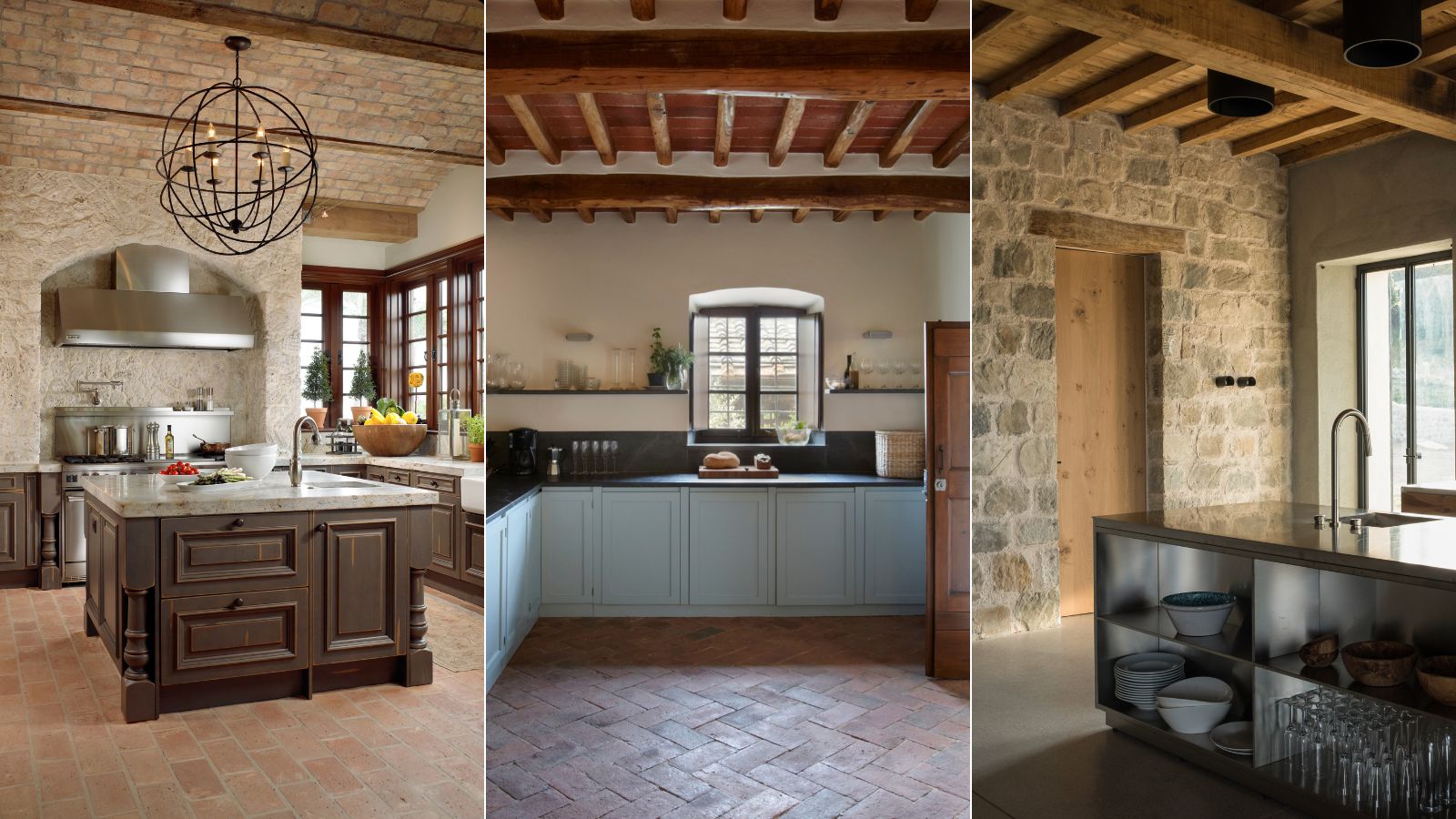
- 1. A Tuscan villa kitchen centered around cooking
- 2. A Tuscan-inspired kitchen created using authentic Italian materials
- 3. A Tuscan kitchen that blends rustic and contemporary
- 4. A modern Tuscan kitchen
- 5. A Tuscan kitchen decorated with reclaimed materials
- 6. An elegant take on Tuscan kitchen design
- 7. An eclectic Tuscan kitchen that embraces open storage
Tuscan kitchens have a unique aesthetic that separates them from designs of surrounding regions. With their rustic charm and aged appeal, it's no wonder these spaces are trending right now.
Kitchen ideas and styles have been shifting from pristine and contemporary to eclectic and timeless, and the Tuscan kitchen style falls perfectly into this design ethos. Infusing a dose of Italian countryside living and unfussy style, there are lessons to be learned from this European kitchen design, wherever you live in the world.
From spaces that embrace the old a loved to schemes blending old with new, we've asked interior designers to share their Tuscan kitchen designs to find out exactly what design elements are core to the spaces.
7 Tuscan kitchens to transport you to the Italian countryside
From charming, rustic kitchen schemes to thoughtfully styled contemporary spaces, these Tuscan kitchens are full of inspiring ideas. And while most of these kitchens are actually designed in Tuscan homes, there are plenty of cues that can be embraced in any scheme.
1. A Tuscan villa kitchen centered around cooking
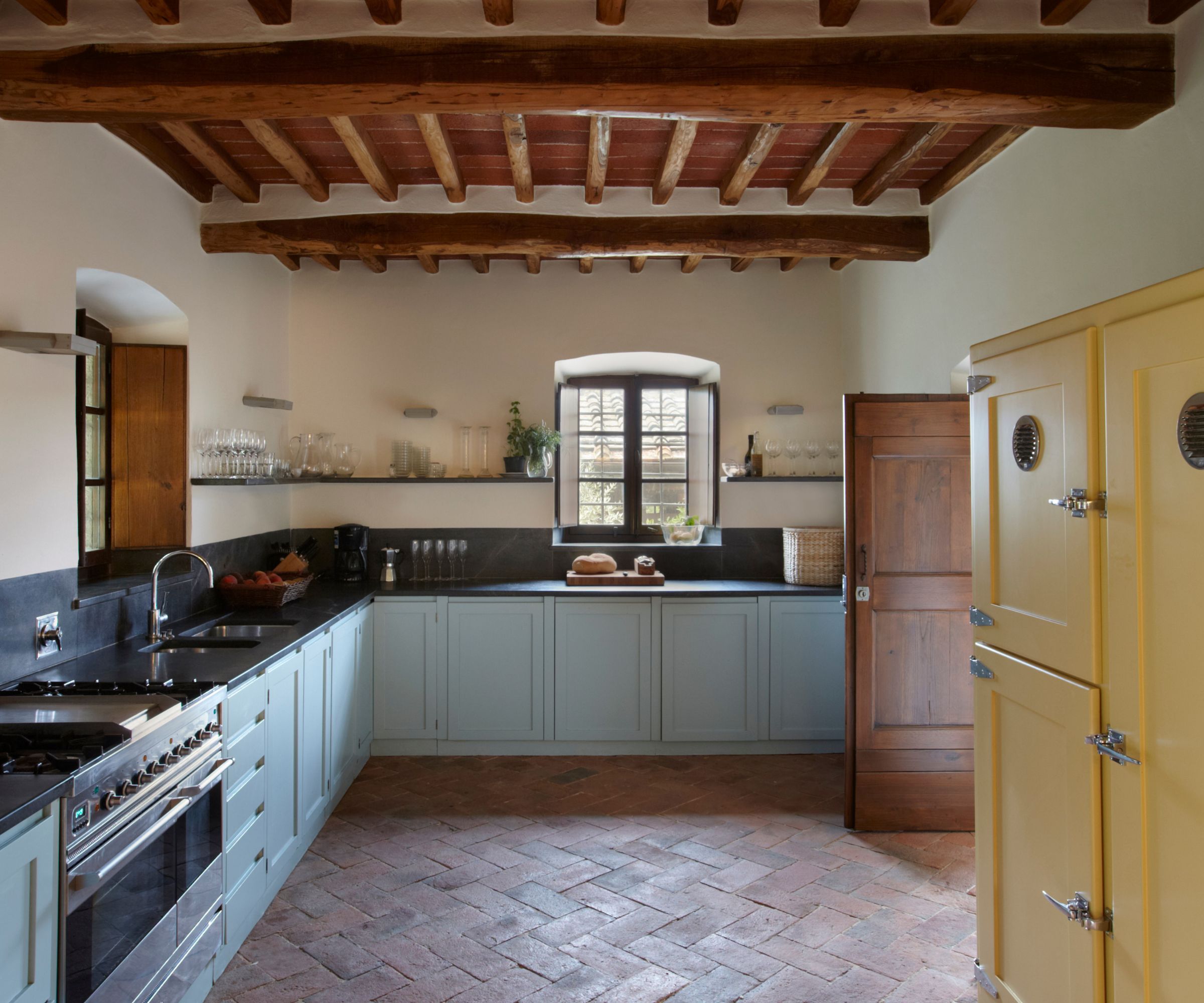
Tuscan kitchens come in different shapes and sizes, but the fundamental design elements all make an appearance. 'Tuscan kitchen style has its own specific evocative aesthetic, reflecting the rustic charm found in the farmhouses and villas of this region in Italy,' says interior designer Katharine Pooley.
'Having designed a beautiful villa set into a Tuscan hillside, surrounded by olive groves and vineyards, for a client who loved to cook and who wished for the kitchen to be central to the overall design, I have learned that certain design decisions evoke Tuscan style in a kitchen setting and will immediately transport you to this magical corner of the world,' she adds.
One of the main takeaways from Tuscan kitchens is the fact that they look lived-in. Staple ingredients are kept on kitchen counters for easy access, and nothing is too perfect. 'Tuscan kitchens are all about the art of cooking and are gloriously inviting and inclusive in that regard.'
Design expertise in your inbox – from inspiring decorating ideas and beautiful celebrity homes to practical gardening advice and shopping round-ups.
'They are places to spend time and savor all of the pleasure of food. I think ample marble or granite counter space for bread and pasta making, a beautiful collection of glass bottles containing delectable oils and vinegar, and a large stove are all essentials,' Katharine explains.
2. A Tuscan-inspired kitchen created using authentic Italian materials
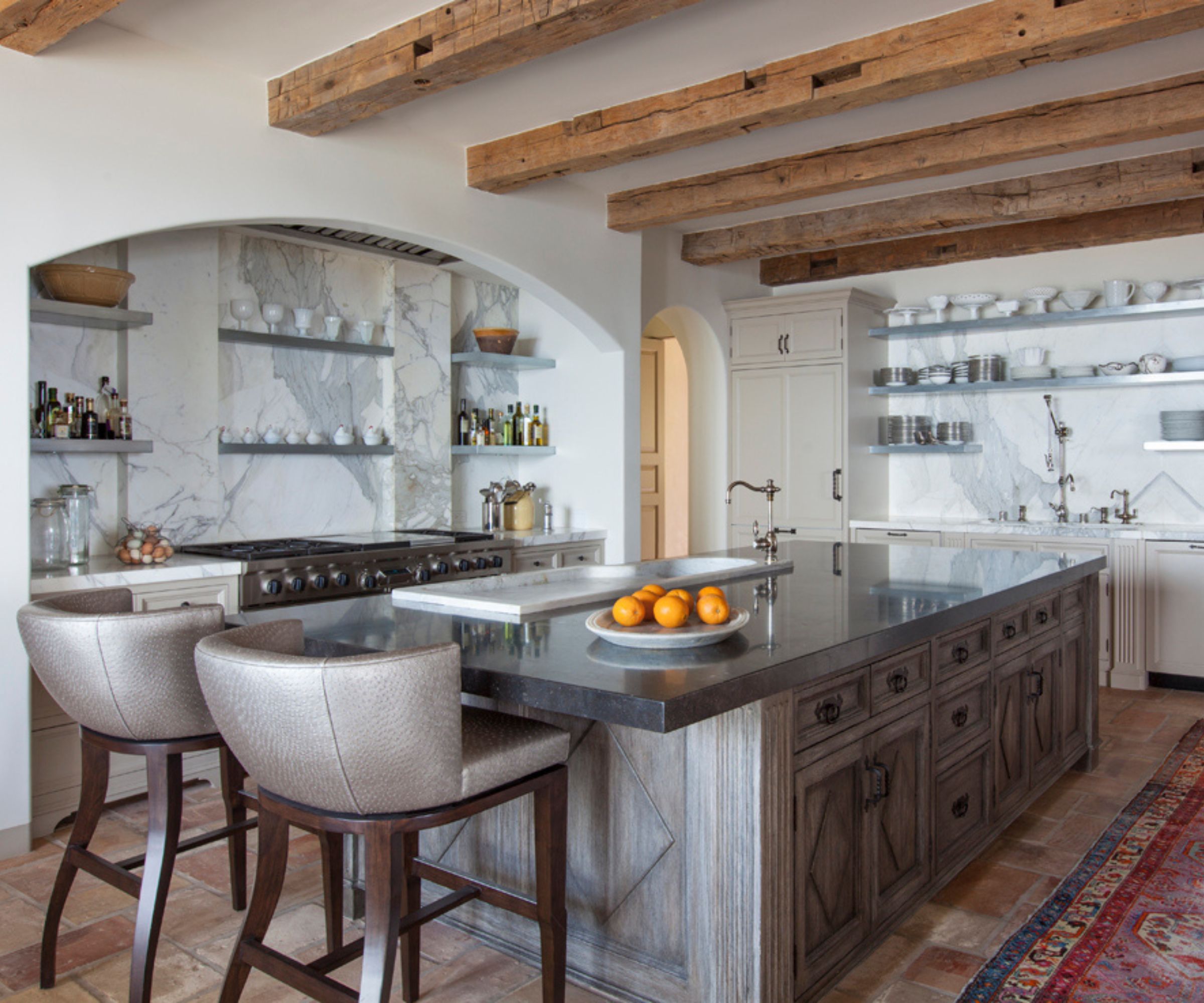
To introduce Tuscan style to a kitchen, using materials you'd expect to find in the region will instantly create an authentic feel. Consider the countertop materials you use and the decor you display – these simple details make all the difference, as demonstrated in this kitchen scheme.
'Spending a great amount of time in Tuscany, the clients wanted to replicate the Tuscan flavor in Malibu. The kitchen emulates an original aged Tuscan home through ceiling timbers rescued from a Tuscan farmhouse, walls with Italian Calacatta marble, and meticulous woodwork,' explains Philip Nimmo, of Philip Nimmo Design.
'The combination of the old world with modern conveniences created a magical kitchen overlooking the Pacific,' he adds. The most notable features here include the marble that is taken up the walls, the open shelving in place of upper kitchen cabinetry, and rustic wood finishes to contrast with the more luxurious feel of the marble. This old-meets-new look feels core to the Tuscan kitchen style and creates a space that feels lived-in.
3. A Tuscan kitchen that blends rustic and contemporary
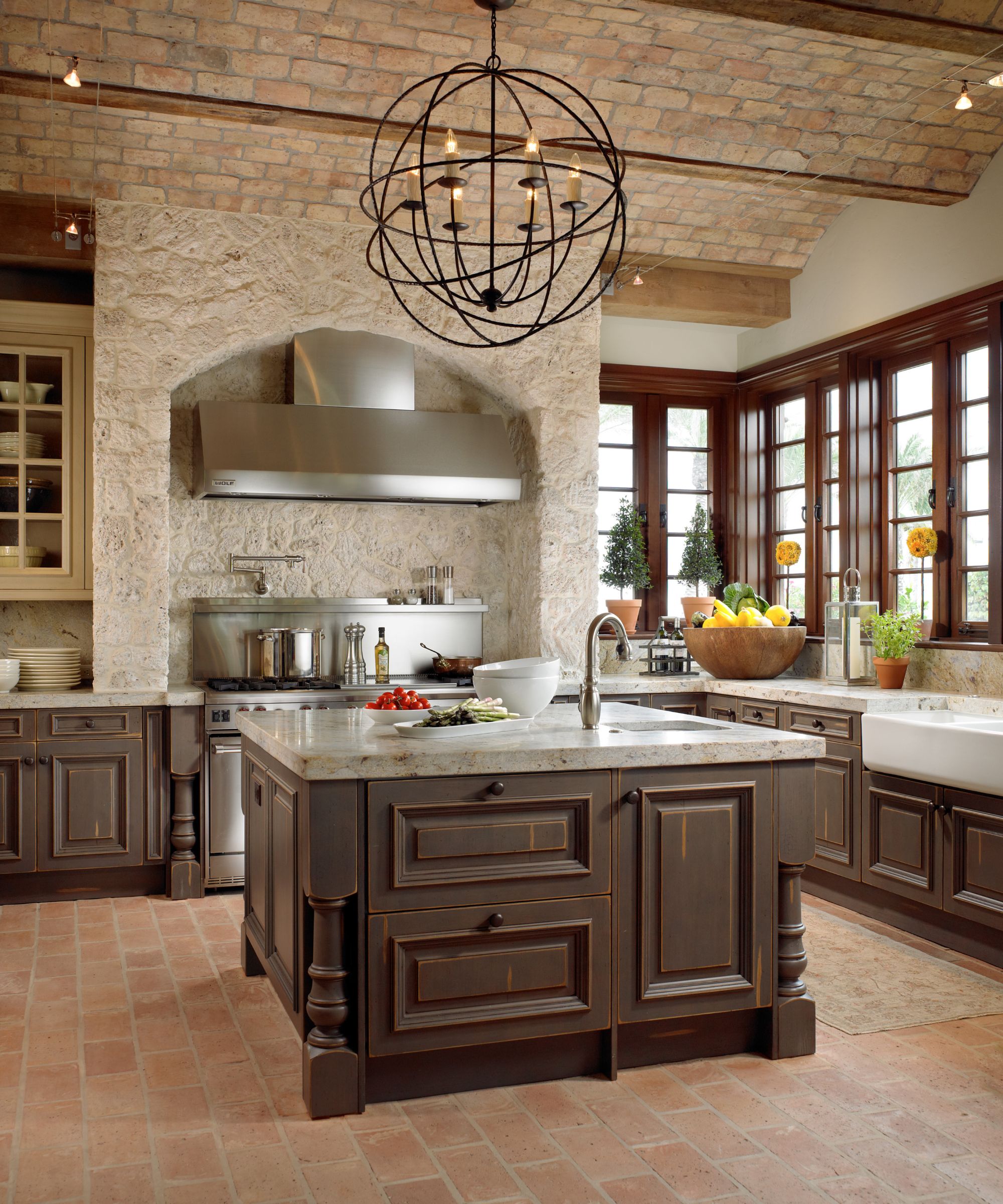
While the rustic elements of Tuscan kitchens bring a charm to these spaces, there is space for more modern elements that bring them into the 21st century. 'A Tuscan kitchen wants to have a combination of both rustic and fresh elements,' says Kathryn Dunagan, vice president at Marc-Michaels Interior Design.
'There must be an organic quality that feels authentic and natural, while refined elements such as cabinetry mix well into the space and can balance the look. Ceiling beams often speak to a Tuscan aesthetic, too,' she adds.
This Tuscan kitchen is a great example of how more rustic elements can pair seamlessly with more modern additions. 'We anchored the kitchen with an organic rubble stone hood that feels strong and time-weathered. The ceiling is ornamented with antique brick and wood beams, executed in an authentic barrel pattern,' Kathryn explains.
'We mixed cabinetry finishes, rustic and refined, to give the sense this kitchen has evolved through the generations. We integrated track lighting to modernize the aesthetic without taking away from the charm,' she adds.
4. A modern Tuscan kitchen
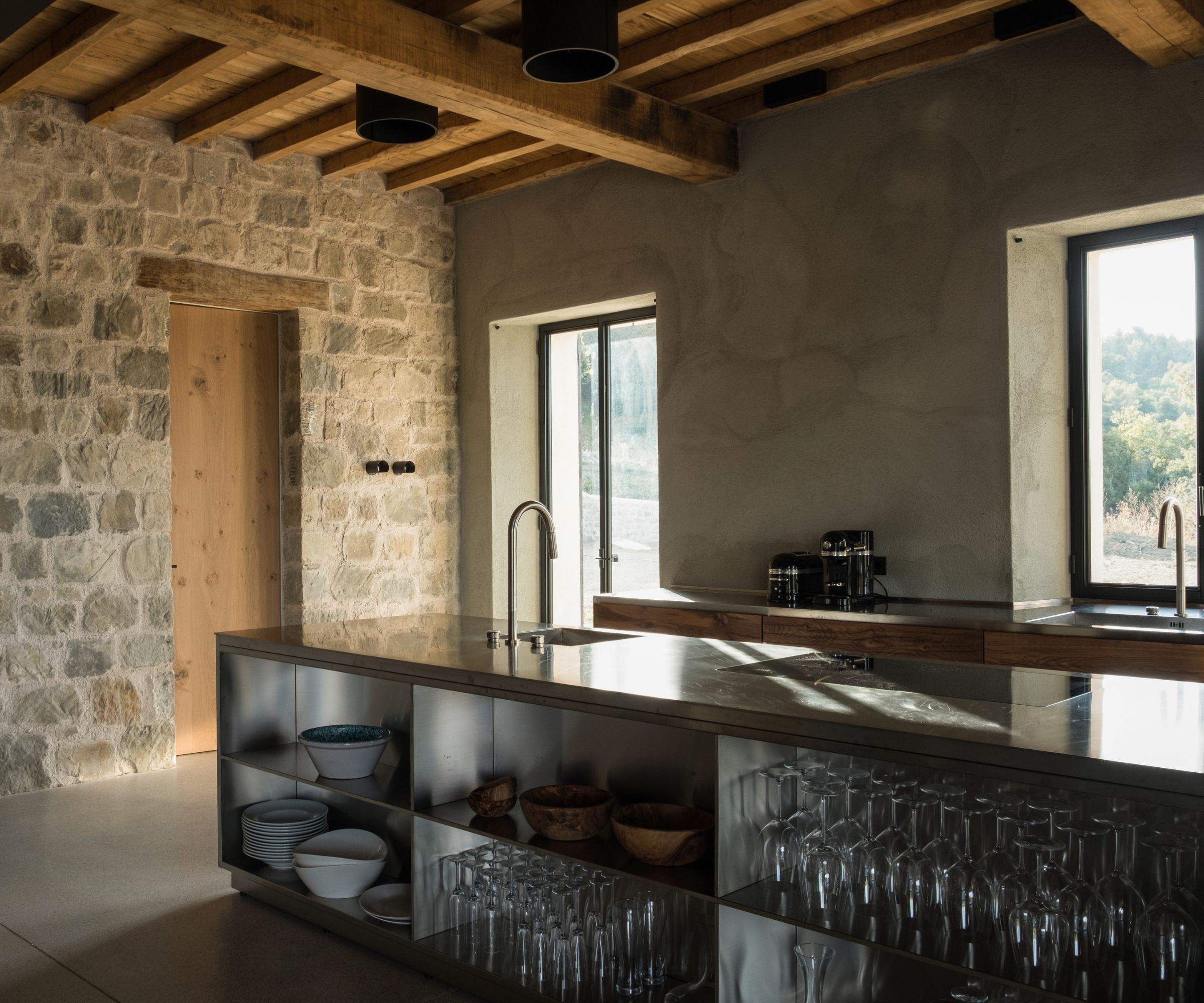
Traditional and rustic are two words that come to mind when you think of a Tuscan kitchen. And while this may be true, not every local will favor this interior design style – more modern Tuscan kitchens are proving that you can introduce contemporary flair to an old home, while still retaining a welcoming atmosphere.
'For me, Tuscan kitchens evoke a feeling of warmth and hospitality. They're all about bringing people together, not just for cooking, but for creating meaningful connections. With their open layout easily connecting dining and living areas, they emphasize shared experiences and a sense of togetherness. Natural materials like wood and stone play a key role in creating a cozy atmosphere, making them perfect spaces for gatherings and fostering hospitality,' says interior designer Stephanie Thatenhorst.
'In designing this kitchen, we aimed to honor the villa's Tuscan heritage while integrating modern functionality. The integration of sleek stainless steel surfaces amidst the natural stone walls and original wooden beams adds a captivating contrast. This blend of traditional and modern elements creates a space that feels both authentic and innovative, reflecting the essence of Tuscan living,' she explains.
5. A Tuscan kitchen decorated with reclaimed materials
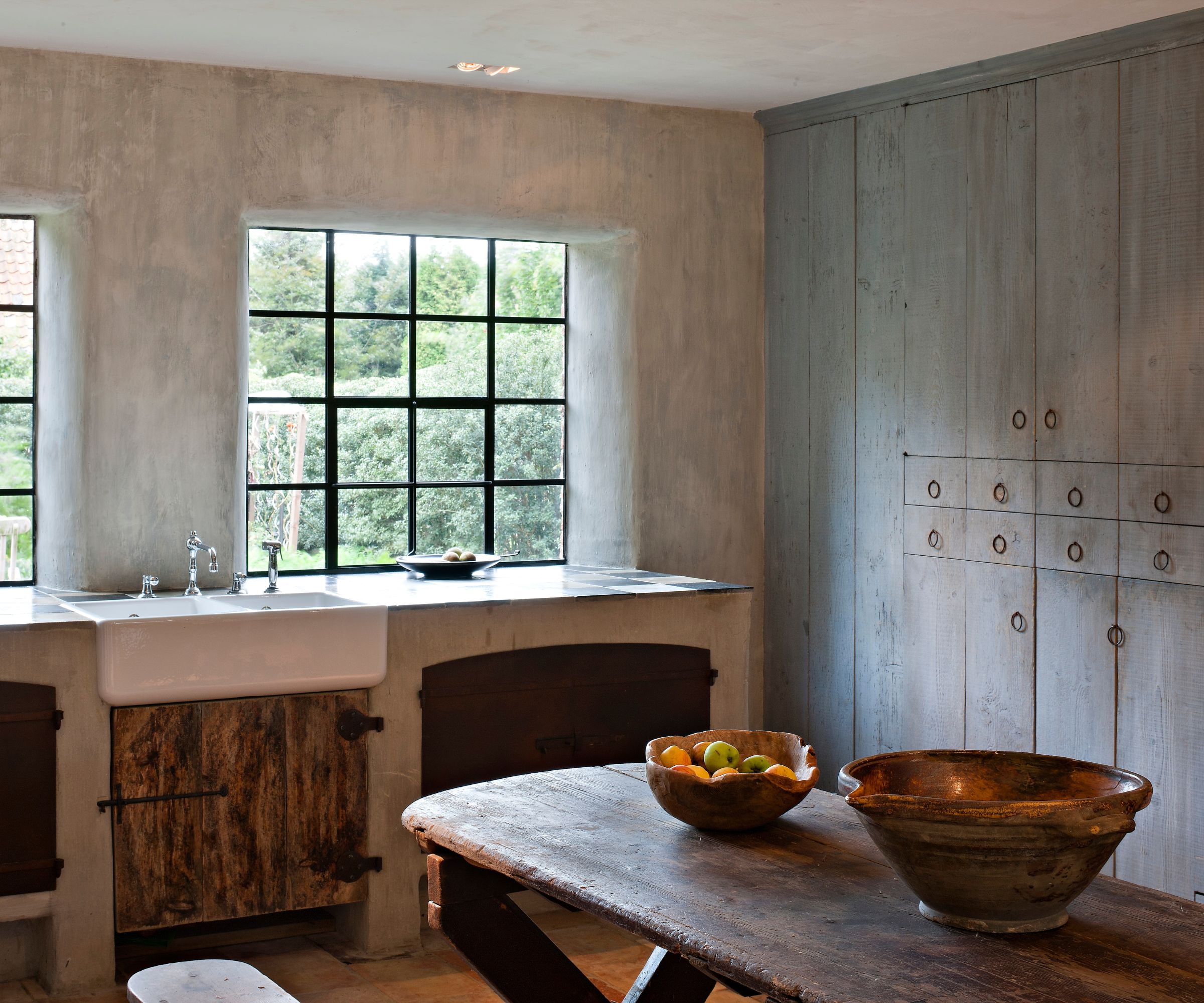
Reclaimed materials are ever present in Tuscan kitchens – from terracotta tiles to the kitchen sink, these salvaged pieces are key to rustic style. Authentic and natural materials go a long way in Tuscan kitchens and are key to adding charm and character.
'A Tuscan style kitchen typically has terracotta flooring or big natural stone slabs. Use of natural materials (wood for the cupboards), integration of antique or old furniture, light colors with natural paint and lots of patina, use of beams in the ceiling, an integrated fireplace, and high ceilings,' says Caroline De Wolf, of Joris Van Apers Studio.
'In this kitchen, we used reclaimed terracotta tiles on the floor and reclaimed tiles for the worktop next to the sink. Antique furniture and tableware, walls and furniture with a lot of texture and patina were also used,' she adds.
6. An elegant take on Tuscan kitchen design
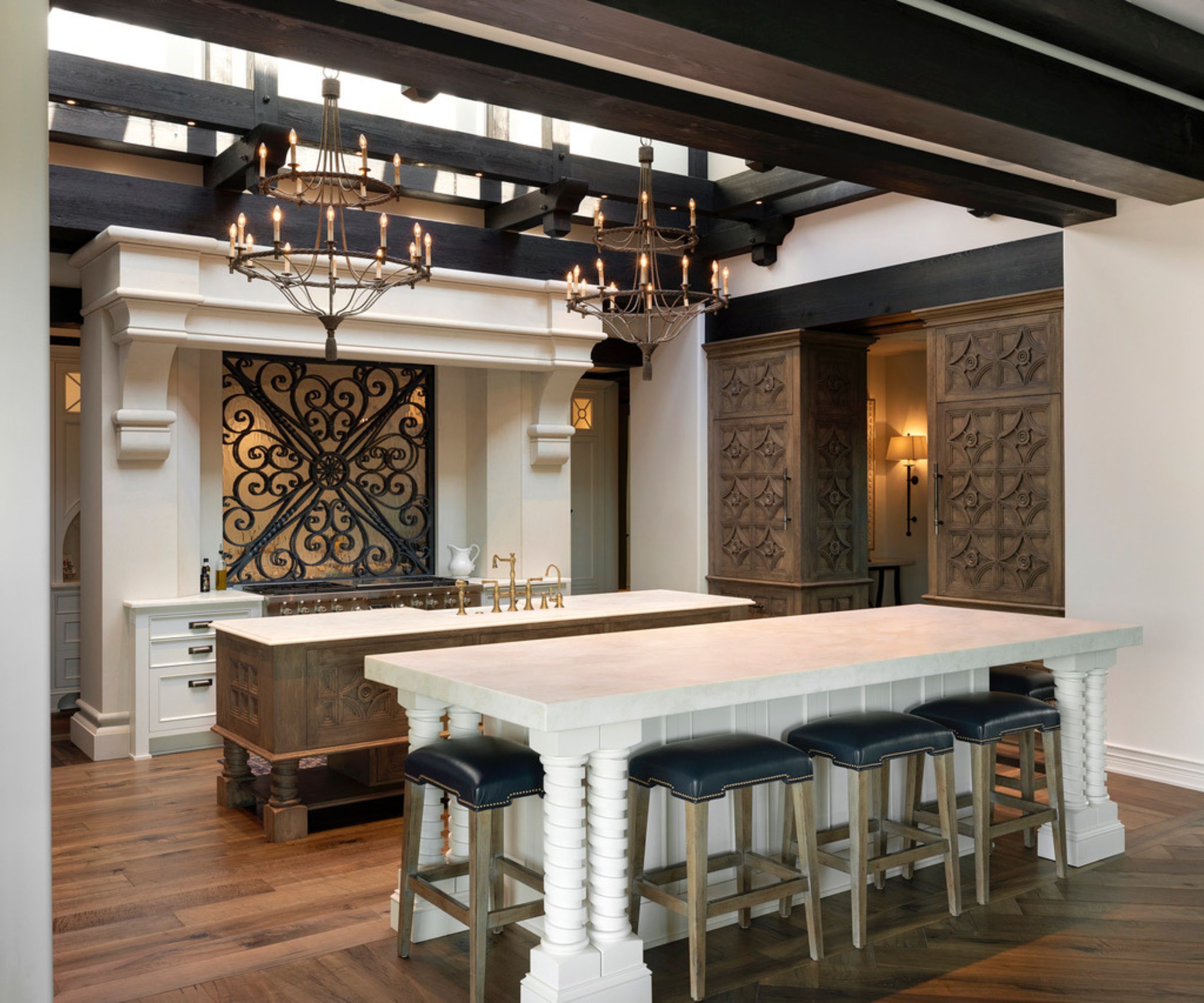
White kitchens have their place in Tuscan homes. In fact, paired with natural woods, earth tones, and iron accents, you can create an authentic scheme that balances traditional Tuscan design with an elegant finish.
'Tuscan style is both rustic and elegant. We create the style in this kitchen by using heavy textures, rod iron accents, timber framing, ceramic objects, and stone walls. The skylight provides the homeowners with ample natural light for indoor plants, making it more of an atrium space, bringing more of a natural aesthetic to the interior,' explains James McNeal, of James McNeal Architecture & Design (JMAD).
'Our Tuscan Villa kitchen has an updated look, with white cabinets and new appliances. Yet the updated look doesn’t take away from the heavy forms, earthy tones and textured cabinetry which give it that Tuscan feel,' he adds.
7. An eclectic Tuscan kitchen that embraces open storage
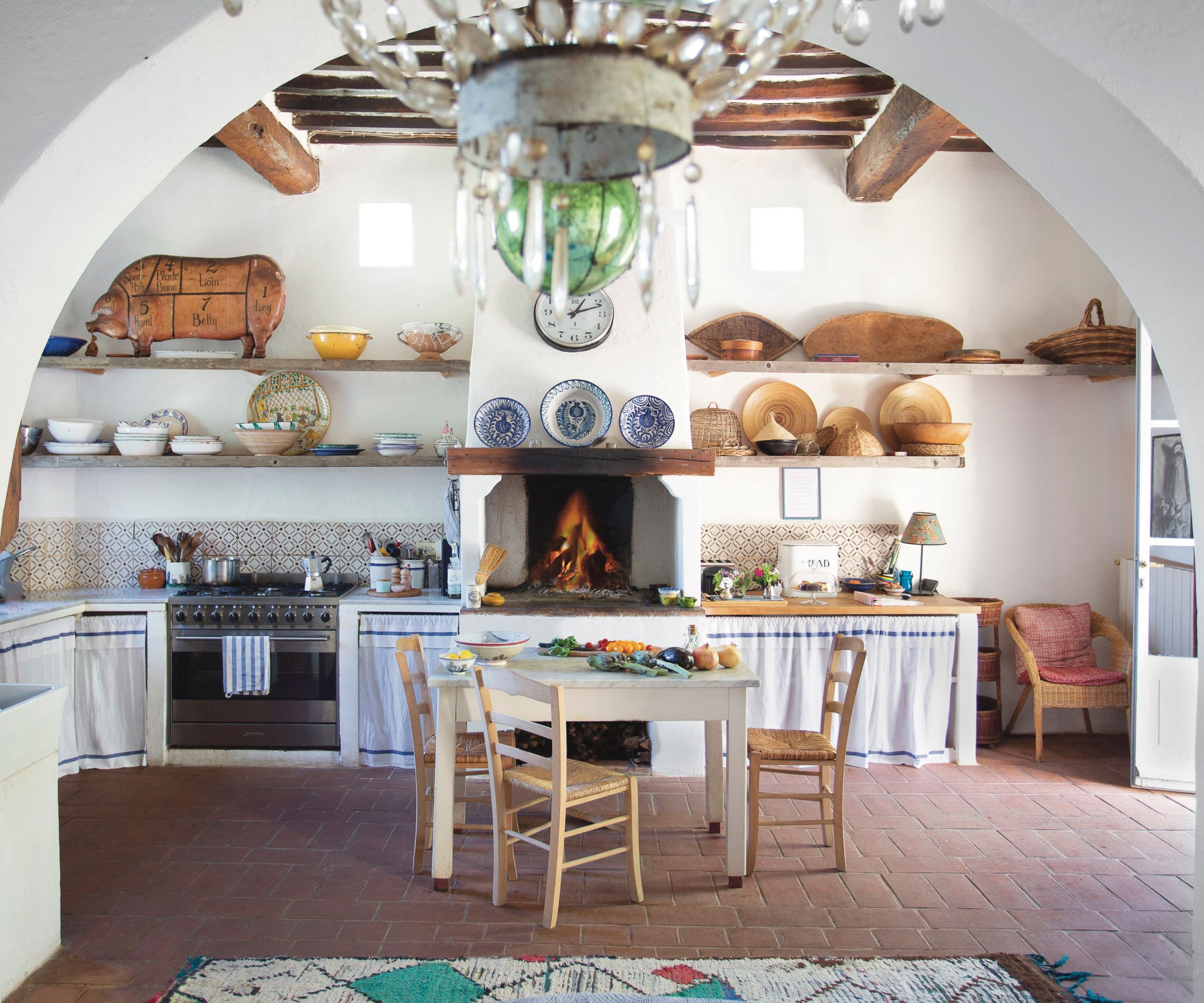
Traditional Tuscan kitchens don't tend to feature large, built-in cabinetry, rather you'll see lower cabinets covered with cafe curtains, open shelving filled with pretty tableware, and pans hanging from pot rails. This more eclectic, collected look adds to the charm and personality of the style.
'Tuscan kitchens are generally very functional but never built in. There would be a marble-topped pasta table, a long stone sink for buckets with vegetable peelings, and plenty of space for draining pasta and big pots. There would have always been a fireplace for cooking on and keeping pots warm often even big enough for sitting in during the winter,' says interior designer Camilla Guinness.
'When we made our kitchen we wanted it to feel like a Tuscan kitchen. We built a waist-high fireplace which we cook on but also just always have lit. We have curtains instead of doors under the countertops, terracotta brick floors, a pasta table, and a long marble-top table with a hole by the drawer for a rolling pin,' she explains.
'We used antique maioliche tiles on the walls and used round pieces of wood to supper the open shelves. In the dining area, we used old windows to make a built-in cupboard and built side tables which were then plastered and topped with thin terracotta tiles. It’s my favorite room in the house,' she adds.
Tuscan kitchens have evolved over time, but the heart of this design style remains the same. Rustic charm is at its core, whether the scheme leans more traditional or takes on more contemporary features. Authentic Italian materials are key, as are reclaimed pieces and a lived-in appeal. Essentially, these spaces are warm, welcoming, and unfussy – everything this year's kitchen trends are embracing!

I’ve worked in the interiors magazine industry for the past five years and joined Homes & Gardens at the beginning of 2024 as the Kitchens & Bathrooms editor. While I love every part of interior design, kitchens and bathrooms are some of the most exciting to design, conceptualize, and write about. There are so many trends, materials, colors, and playful decor elements to explore and experiment with.